The best place to visit is Leh Ladakh
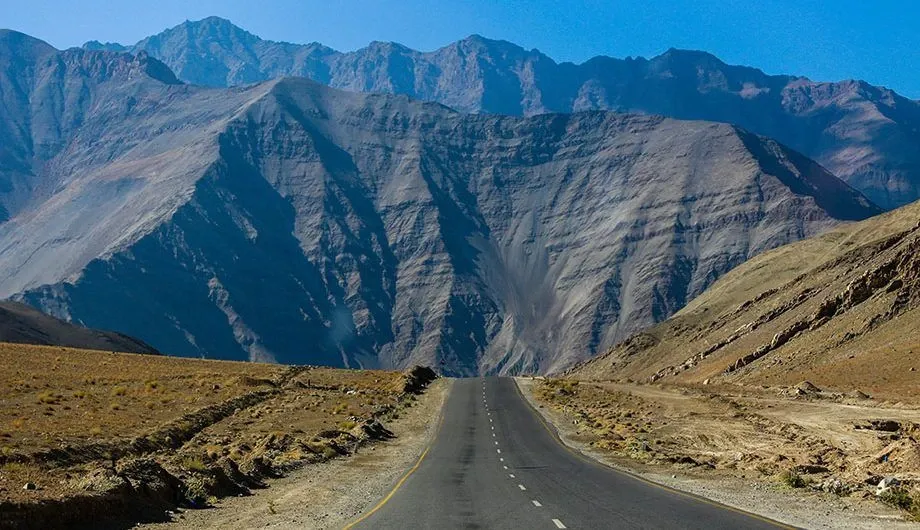
Nestled high in the Himalayas, Leh Ladakh stands as an epitome of raw beauty, serenity, and adventure. This northernmost region of India has captivated the hearts of travelers and adventurers alike, earning its reputation as the best place to visit. From breathtaking landscapes to vibrant culture, Leh Ladakh offers an unparalleled experience that goes beyond the ordinary tourist destinations.
Mesmerizing Landscapes: Leh Ladakh is a canvas painted with stunning landscapes that change hues with the seasons. The barren mountains, crystal-clear lakes, and meandering rivers create a surreal panorama that leaves visitors in awe. The iconic Pangong Lake, surrounded by rugged mountains, reflects the ever-changing colors of the sky, making it a must-see destination.
Cultural Richness: Rich in Tibetan Buddhist culture, Leh Ladakh boasts monasteries that seem to cling to the cliffs, showcasing intricate artwork and ancient teachings. Thiksey Monastery, Hemis Monastery, and Diskit Monastery are among the cultural gems that offer a glimpse into the spiritual and historical heritage of the region.
Adventure Paradise: For thrill-seekers, Leh Ladakh is a playground of adventure. The challenging terrains and high-altitude passes attract motorbike enthusiasts for an unforgettable journey on the Leh-Manali Highway. Trekking routes like Markha Valley and Stok Kangri present an opportunity to conquer towering peaks, offering a sense of accomplishment amidst awe-inspiring scenery.
Enchanting Local Markets: Leh's bustling markets are a delightful fusion of traditional Ladakhi craftsmanship and vibrant Tibetan influences. Exploring the Leh market allows visitors to shop for handmade textiles, jewelry, and local artifacts while interacting with friendly locals. The vibrant bazaars are a reflection of Ladakh's unique blend of cultures.
Magnetic Hill and Other Natural Wonders: The enigmatic Magnetic Hill, where vehicles seem to defy gravity, adds an element of mystery to the region. Leh Ladakh is also home to the confluence of the Indus and Zanskar rivers, a breathtaking spectacle where the different colors of the two rivers merge against the rugged backdrop.
Serenity and Spiritual Retreat : The tranquil environment of Leh Ladakh provides an ideal setting for those seeking spiritual solace. Away from the hustle and bustle of urban life, the monasteries and stupas exude a sense of peace, allowing visitors to meditate and connect with their inner selves.
Hospitality and Warmth: The locals of Leh Ladakh are known for their hospitality and warmth. Visitors often find themselves welcomed into Ladakhi homes, savoring traditional cuisine and engaging in heartwarming conversations. The genuine kindness of the people adds an extra layer of charm to the overall experience.
Leh Ladakh isn't just a destination; it's a transformative journey that lingers in the hearts of those fortunate enough to experience its magic. From the surreal landscapes to the vibrant culture, adventurous pursuits, and warm hospitality, Leh Ladakh stands tall as the best place to visit for those seeking an extraordinary and soul-stirring travel experience. Plan your trip to this Himalayan haven and unlock the door to a world of wonders and discoveries
Visiting From April To Mid – May
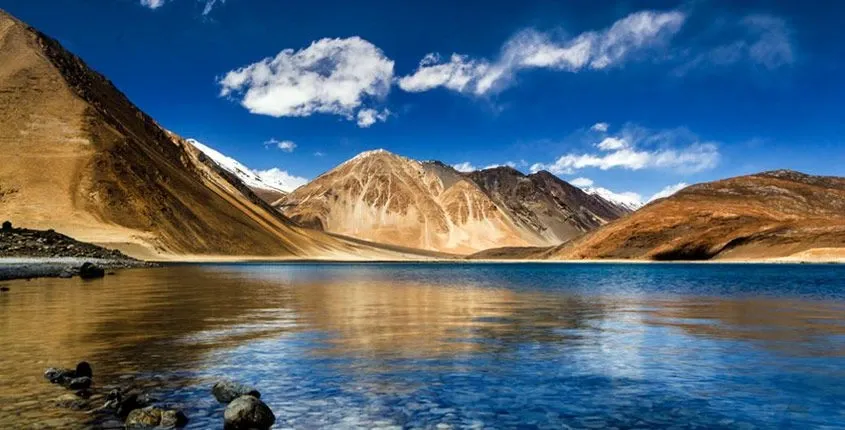
Visiting Leh Ladakh from April to mid-May offers a unique experience as the region transitions from winter to summer. Here are more details on what you can expect during this period:
Transitional Weather:
- End of Winter, Beginning of Summer: April marks the end of winter, and the weather gradually starts to warm up. However, temperatures can still be chilly, especially in the evenings and early mornings.
- Melting Snow: The melting snow from the winter season adds a picturesque touch to the landscapes, revealing vibrant colors and lush greenery in the valleys.
Landscape Transformation:
- Snow-Capped Peaks: While some higher-altitude areas may still have snow-covered peaks, the lower regions start to showcase the emergence of colorful flowers and thawed landscapes.
- Frozen Lakes: Lakes like Pangong Tso and Tso Moriri may still have patches of ice, creating a unique juxtaposition of frozen and thawed elements.
Limited Accessibility:
- Road Openings: The Srinagar-Leh Highway and the Manali-Leh Highway, the two main access routes to Leh, start to open during this period. However, the full opening depends on weather conditions, and certain passes may still be under maintenance.
- Limited Air Traffic Issues: Air travel becomes more reliable compared to the winter months, but occasionally flights may be delayed or canceled due to unpredictable weather.
Cultural Celebrations:
- Losar Festival: If your visit coincides with early April, you might have the chance to witness the Ladakhi New Year celebration called Losar. The festival involves colorful processions, traditional dances, and vibrant ceremonies.
- Hemis Festival: Mid-May may see the beginning of the Hemis Festival, one of the most significant and colorful festivals in Ladakh. It features masked dances, music, and a lively atmosphere at the Hemis Monastery.
Outdoor Activities:
- Trekking and Hiking: April to mid-May is an ideal time for trekking enthusiasts. While some higher-altitude treks may still have snow, lower-altitude routes become accessible, providing opportunities for stunning walks amid blossoming flora.
- River Rafting: As the snow starts to melt, river rafting becomes popular on the Zanskar and Indus rivers. The slightly warmer temperatures make this adventure activity more comfortable.
Accommodation and Tourism:
- Availability: Accommodations and tourism services start to open up more widely, but it's advisable to make reservations in advance, especially for popular destinations and during festivals.
- Quieter Atmosphere: Compared to peak summer months, April to mid-May offers a more tranquil experience with fewer tourists, allowing you to enjoy the serene landscapes with a sense of solitude.
Preparation for Altitude:
- Acclimatization: Given the high altitude of Leh Ladakh, acclimatization is crucial. Take it easy during the initial days to allow your body to adjust to the altitude.
- Hydration: Despite the cooler temperatures, staying hydrated is important at higher altitudes. Carry a reusable water bottle and drink plenty of fluids to prevent altitude-related issues.
Photography Opportunities:
- Changing Colors: The landscape's changing colors, from the remnants of winter snow to emerging greens and blossoming flowers, provide fantastic photo opportunities. The clear skies and crisp air enhance the visibility of the surrounding mountains.
Visiting Leh Ladakh from April to mid-May offers a unique and beautiful experience as the region transitions from winter's embrace to the vibrant awakening of spring. Whether you're interested in cultural celebrations, adventure activities, or simply immersing yourself in the stunning scenery, this time of the year provides a balance between accessibility and the unique charm of the changing seasons
Mid - May To July
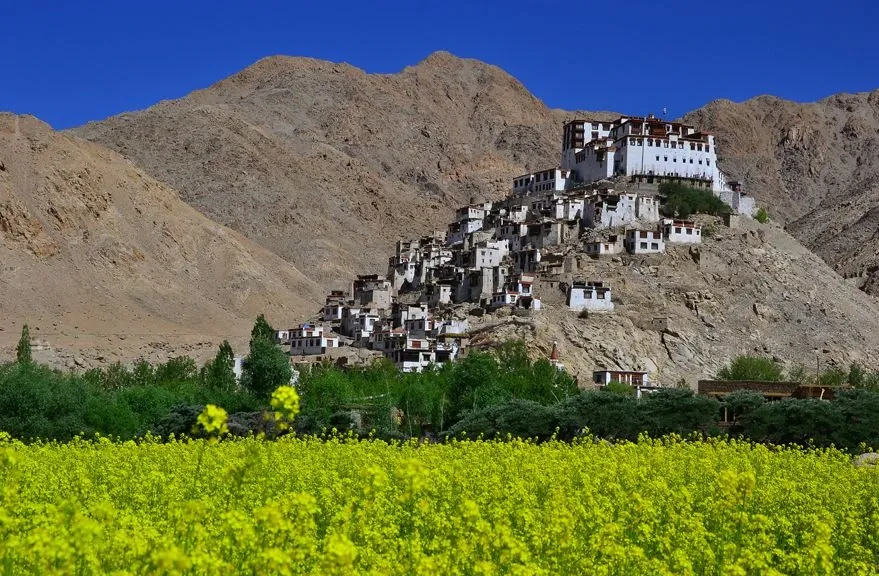
Visiting Leh Ladakh from mid-May to July opens up a different chapter in the region's seasonal narrative. Here are more details on what you can expect during this period:
Peak Summer Season:
- Warmer Temperatures: Mid-May to July marks the peak of summer in Leh Ladakh. While daytime temperatures are comfortably warm, nights can still be cool, making layers essential.
- Clear Skies: The summer months bring clear skies and extended daylight hours, providing optimal conditions for outdoor activities and exploration.
Full Accessibility:
- Open Roads: By mid-May, all major roadways, including the Srinagar-Leh Highway and Manali-Leh Highway, are typically fully open, facilitating easier access to Leh Ladakh.
- Increased Flights: Air travel becomes more reliable and frequent during these months, with increased flight schedules connecting Leh to major cities.
Lush Greenery and Blooms:
- Floral Extravaganza: The landscape undergoes a dramatic transformation, with lush greenery covering the valleys and vibrant wildflowers painting the meadows. The stark beauty of the region is softened by the burst of colors.
- Blossoming Orchards: Fruit orchards, especially apple and apricot trees, are in full bloom during this period, adding a touch of vibrancy to the surroundings.
Pristine Lakes and Rivers:
- Thawed Lakes: Lakes like Pangong Tso and Tso Moriri are completely thawed, offering pristine, reflective surfaces surrounded by greenery and snow-capped peaks.
- River Activities: River rafting becomes more popular as the water levels rise, providing thrilling adventures on the Indus and Zanskar rivers.
Cultural Events and Festivals:
- Hemis Festival: If you missed the beginning of the Hemis Festival in mid-May, you may still catch some of the festivities during early June. The vibrant cultural event is a must-see, featuring traditional dances, music, and religious ceremonies.
- Local Fairs and Celebrations: Several local fairs and celebrations take place during these months, providing insights into Ladakhi culture and traditions.
Diverse Outdoor Activities:
- Trekking Opportunities: A wide range of trekking trails become accessible, from the popular Markha Valley Trek to more challenging routes like the Stok Kangri Summit.
- Cycling and Motorbiking: The warm weather makes cycling and motorbiking popular activities, allowing you to explore the picturesque landscapes at your own pace.
- Wildlife Spotting: The summer months offer increased chances of spotting wildlife, including marmots, Himalayan hares, and various bird species.
Accommodation and Tourism:
- High Tourist Season: Mid-May to July is considered the high tourist season, and popular destinations may see an influx of visitors. It's advisable to book accommodations in advance.
- Wider Range of Services: With increased tourism, a wider range of services, including guided tours, transportation options, and cultural programs, become available.
Starry Nights and Stargazing:
- Clear Night Skies: The clear skies of Leh Ladakh offer spectacular stargazing opportunities. The high altitude and low light pollution make it an ideal location for astronomy enthusiasts.
- Observatories: Some organized tours and local initiatives offer stargazing experiences with telescopes, allowing you to witness the celestial wonders of the Ladakhi night sky.
Visiting Leh Ladakh from mid-May to July provides a dynamic and vibrant experience, with the region transitioning from the remnants of winter to the full bloom of summer. Whether you're seeking cultural immersion, outdoor adventures, or simply reveling in the beauty of the landscape, this period offers a perfect balance of accessibility and natural splendor
August To Mid – September
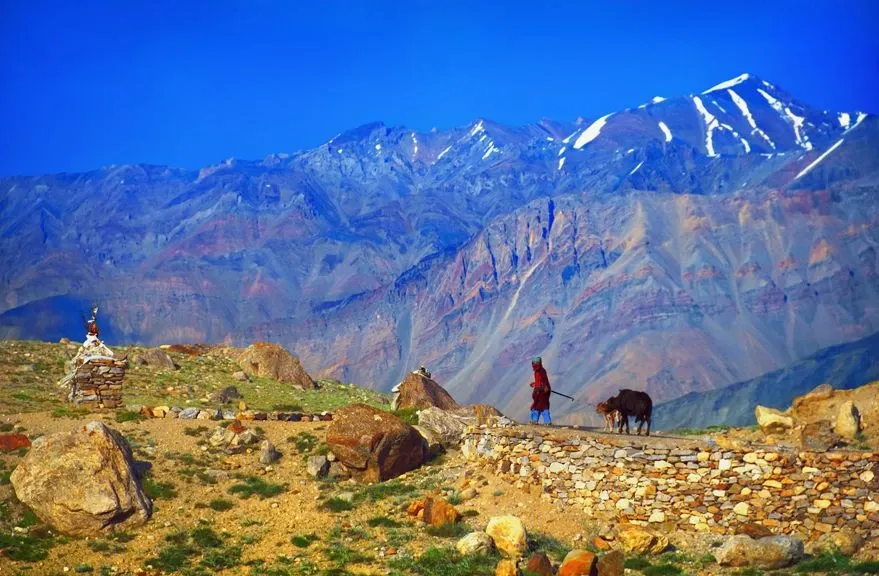
Visiting Leh Ladakh from August to mid-September presents a different facet of the region, characterized by pleasant weather, vibrant landscapes, and unique cultural experiences. Here are more details on what to expect during this period:
Late Summer Bliss:
- Moderate Temperatures: August marks the tail end of summer, bringing milder daytime temperatures while retaining cool evenings. This creates a comfortable and pleasant environment for outdoor activities.
- Extended Daylight: Enjoy longer daylight hours, providing ample time for exploration and outdoor adventures.
Lush Greenery and Harvest Season:
- Peak Greenery: The landscape is at its greenest during these months, with valleys covered in lush vegetation and meadows displaying a vibrant carpet of wildflowers.
- Harvest Season: August is the harvest season, and you can witness local farmers tending to their fields and harvesting crops, contributing to the lively atmosphere.
Full Accessibility and Improved Road Conditions:
- Stable Weather: August sees stable weather conditions, ensuring that all major roads and passes remain open for easy access to Leh Ladakh. This includes the picturesque Srinagar-Leh Highway and the challenging Manali-Leh Highway.
- Smooth Travel: Improved road conditions make overland journeys, whether by car or motorcycle, more comfortable and enjoyable.
Festivals and Cultural Celebrations:
- Naropa Festival: In September, the Naropa Festival takes place at Hemis Monastery, celebrating the life of Naropa, a revered Indian Buddhist scholar. The festival includes mask dances, religious ceremonies, and the unveiling of the sacred silk thangka once every 12 years.
- Local Fairs: Various local fairs and cultural events continue to take place during August and September, providing opportunities to engage with Ladakhi traditions and customs.
Adventure Activities:
- Trekking and Hiking: Late summer is an excellent time for trekking, with moderate temperatures and well-defined trails. Consider exploring routes like the Sham Valley Trek or the Nubra Valley Trek.
- Mountain Biking: The pleasant weather makes it an ideal time for mountain biking enthusiasts to explore the diverse landscapes of Leh Ladakh.
Breathtaking Lakes and Rivers:
- Thawed Lakes: Lakes such as Pangong Tso and Tso Moriri remain unfrozen, offering crystal-clear waters surrounded by lush greenery and snow-capped peaks.
- River Rafting: River rafting continues to be a popular activity on the Indus and Zanskar rivers, providing an exhilarating experience amid stunning landscapes.
Photography Opportunities:
- Vivid Landscapes: Capture the vivid contrasts of green valleys against the barren mountains, creating stunning compositions that showcase the diverse beauty of the region.
- Cultural Events: Festivals and cultural celebrations provide vibrant subjects for photography, capturing the essence of Ladakhi traditions and ceremonies.
Accommodation and Tourism:
- Continued High Season: August to mid-September remains part of the high tourist season, so it's advisable to book accommodations in advance, especially in popular tourist destinations.
- Cultural Tours: Engage in cultural tours to monasteries, villages, and markets, immersing yourself in the local way of life.
Visiting Leh Ladakh from August to mid-September offers a delightful blend of pleasant weather, cultural festivities, and the verdant beauty of the region. Whether you're an adventure enthusiast, a culture seeker, or a nature lover, this period provides an ideal window to experience The diverse and enchanting landscapes of Ladakh.
Mid - September To Mid-October
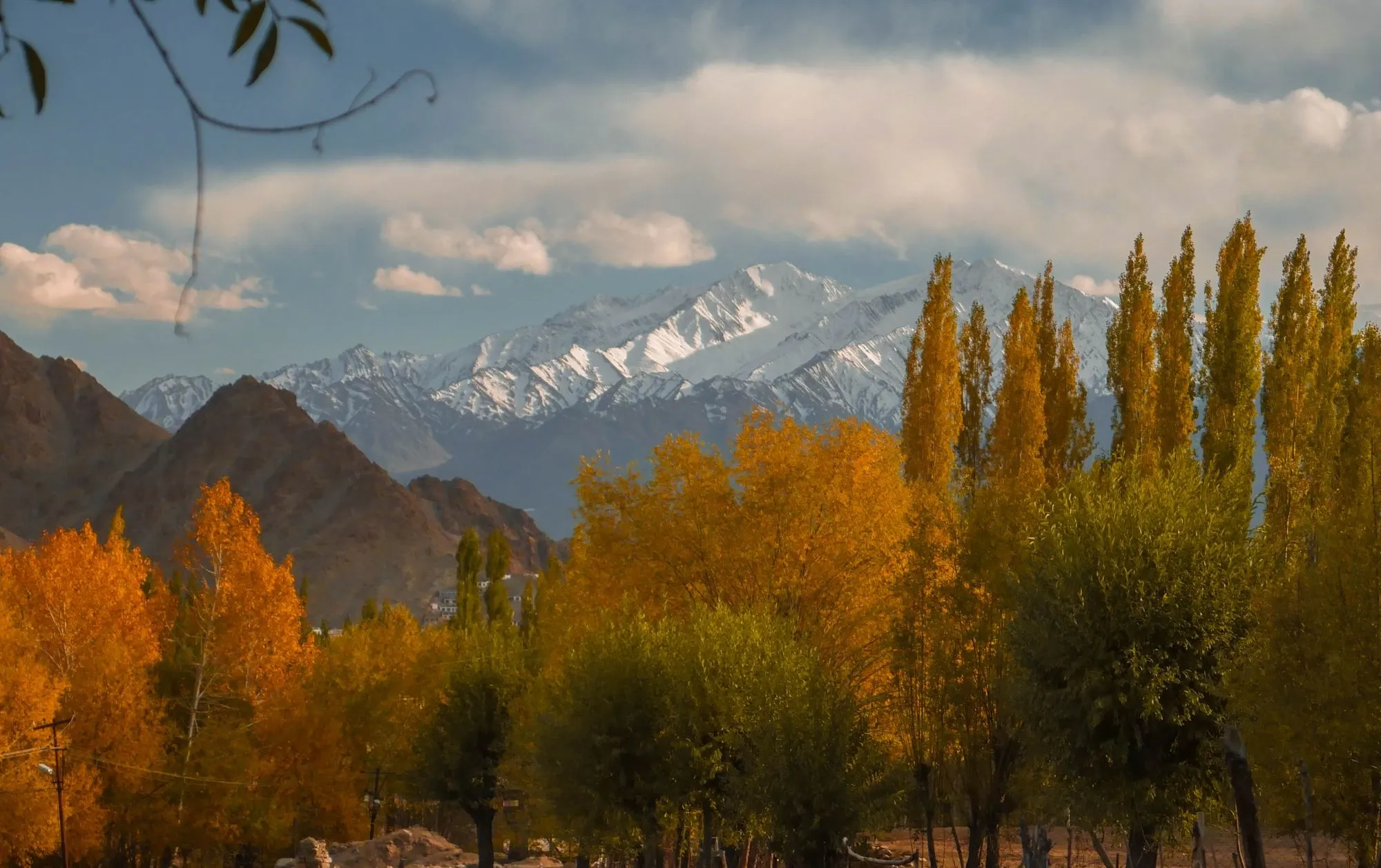
Visiting Leh Ladakh from mid-September to mid-October signifies the onset of autumn, bringing unique colors, crisp weather, and a serene ambiance to the region. Here are more details on what to expect during this period:
Autumnal Splendor:
- Changing Colors: Mid-September to mid-October marks the transition into autumn, painting the landscape with warm hues of gold, orange, and red. The leaves on the trees begin to change, creating a stunning contrast against the rugged mountains.
- Photography Paradise: This time of year offers incredible photography opportunities, with the landscape bathed in the soft, golden light of autumn. The clear skies and vibrant colors create a captivating scene.
Pleasant Weather:
- Crisp Days and Cool Nights: Daytime temperatures are still comfortable, making it pleasant for outdoor activities. However, nights can be chilly, so it's advisable to bring layers to stay warm.
- Clear Skies: Leh Ladakh experiences clear skies during this period, allowing for uninterrupted views of the surrounding mountains and landscapes.
Cultural Celebrations:
- Leh Ladakh Festival: The Leh Ladakh Festival usually takes place in September, showcasing the rich cultural heritage of the region. Enjoy traditional music, dance performances, and vibrant processions during this lively celebration.
- Thiksey Gustor Festival: The Thiksey Monastery hosts the Gustor Festival in October, featuring mask dances, rituals, and vibrant ceremonies. It's a unique opportunity to witness the spiritual and cultural traditions of Ladakh.
Festive Atmosphere:
- Harvest Celebrations: September to mid-October is the time for harvest celebrations in Ladakh. Experience the festive atmosphere as locals celebrate a successful harvest with traditional music, dance, and feasts.
Less Crowded:
- Post-Peak Tourist Season: As October progresses, tourist numbers start to decrease, offering a quieter and more serene experience. You can explore popular sites with fewer crowds and enjoy a more intimate connection with the surroundings.
Adventure Activities:
- Late-season Trekking: While some high-altitude trekking routes may close due to snow, lower-altitude treks like the Sham Valley or Nubra Valley trek remain accessible. The cooler temperatures make trekking more comfortable.
- Mountain Biking: The crisp autumn air is ideal for mountain biking, providing a refreshing and scenic experience.
Closing of High Mountain Passes:
- Rohtang Pass Closure: The Rohtang Pass, connecting Manali to Leh, typically closes in October due to heavy snowfall. Ensure you plan your journey accordingly if you are traveling overland from Manali.
- Khardung La and Chang La: While these high mountain passes remain open, there may be occasional snowfall, and temperatures can drop significantly, especially at night.
Accommodation and Services:
- Limited Services in Remote Areas: In more remote areas, some guesthouses and services may start to wind down as the season comes to a close. Check in advance to ensure accommodations and facilities are available.
- Availability in Leh: Leh, being the main hub, usually continues to offer a variety of accommodations and services during this period.
Visiting Leh Ladakh from mid-September to mid-October provides a tranquil and visually stunning experience as autumn sets in. Whether you're interested in cultural festivities, capturing the beauty of fall foliage, or engaging in adventure activities, this period offers a unique and serene exploration of Ladakh's captivating landscapes.
The Mid - October To Mid-November
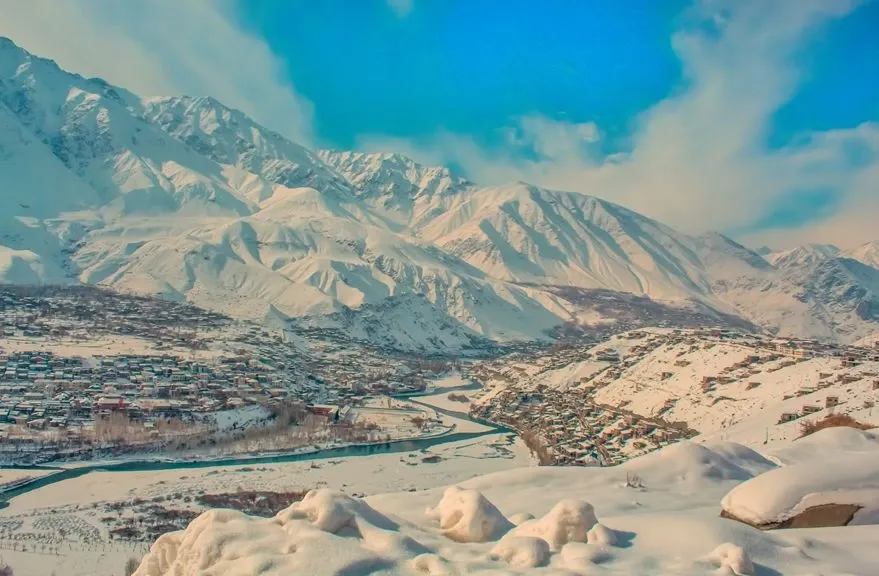
Visiting Leh Ladakh from mid-October to mid-November marks the transition into late autumn and the beginning of winter, bringing distinct changes to the region. Here are more details on what to expect during this period:
Fall Colors and Landscape:
- Leaf Shedding: By mid-October, many trees begin to shed their leaves, and the vibrant fall colors give way to a more subdued and earthy landscape. The barren mountains create a striking contrast against the clear blue skies.
- Photography Opportunities: While the peak of fall colors may have passed, the landscapes retain a unique charm, offering excellent photography opportunities with the interplay of golden hues and snow-dusted peaks.
Cooler Temperatures:
- Decreasing Temperatures: As winter approaches, temperatures start to drop significantly. Daytime temperatures can still be comfortable, but nights become cold, and the chill intensifies as November progresses.
- Snowfall Possibility: In late October and early November, there's a possibility of light snowfall, especially in higher-altitude areas. This adds a touch of winter magic to the landscapes.
Quiet Atmosphere:
- Low Tourist Numbers: Tourist numbers continue to decline during this period, providing a quieter and more tranquil experience. Explore popular sites with minimal crowds and enjoy the serene ambiance.
- Closing of Remote Areas: Some remote areas, high mountain passes, and trekking routes may close due to snowfall, limiting accessibility to certain regions.
Closing of Accommodations and Services:
- Limited Services: In more remote areas, some guesthouses, camps, and services may close as the season comes to an end. Confirm the availability of accommodations and facilities before planning your stay.
- Leh: Availability Continues: Leh, being the main town, usually continues to offer a range of accommodations and services during this period, although some businesses may start to wind down.
Late Festivals and Cultural Events:
- Karsha Gustor Festival: The Karsha Gustor Festival at Karsha Monastery in Zanskar often takes place in late October or early November. This festival includes colorful mask dances, rituals, and cultural celebrations.
- Galdan Namchot: Celebrated in Ladakh, Galdan Namchot usually falls in November, marking the birth and enlightenment of the Tibetan Buddhist saint Tsongkhapa. It involves lighting lamps and butter lamps as part of the celebrations.
Preparation for Winter:
- Limited Agriculture Activity: With the onset of colder weather, agricultural activities wind down, and locals prepare for the approaching winter months.
- Traditional Practices: You may witness traditional practices such as storing crops, preparing livestock for winter, and other seasonal preparations.
Limited Adventure Activities:
- Restricted Trekking Options: High-altitude trekking routes are generally closed due to snow, limiting trekking opportunities. However, some lower-altitude treks may still be accessible earlier in the period.
- Limited Outdoor Adventures: Mountain biking and other outdoor activities become more limited as temperatures drop and snowfall becomes more frequent.
Stunning Winter Scenery:
- Snow-Capped Peaks: As November progresses, snowfall becomes more pronounced in higher-altitude areas, transforming the landscape into a winter wonderland. The snow-capped peaks create a picturesque backdrop against the barren terrain.
- Frozen Lakes: Lakes like Pangong Tso and Tso Moriri start to freeze around the edges, adding an icy touch to their pristine surfaces.
Visiting Leh Ladakh from mid-October to mid-November offers a quieter and more introspective experience as the region transitions from autumn to early winter. While some activities may be limited, the changing landscape and the hint of winter magic make it a unique and contemplative time to explore the beauty of Ladakh.
Mid - November To March
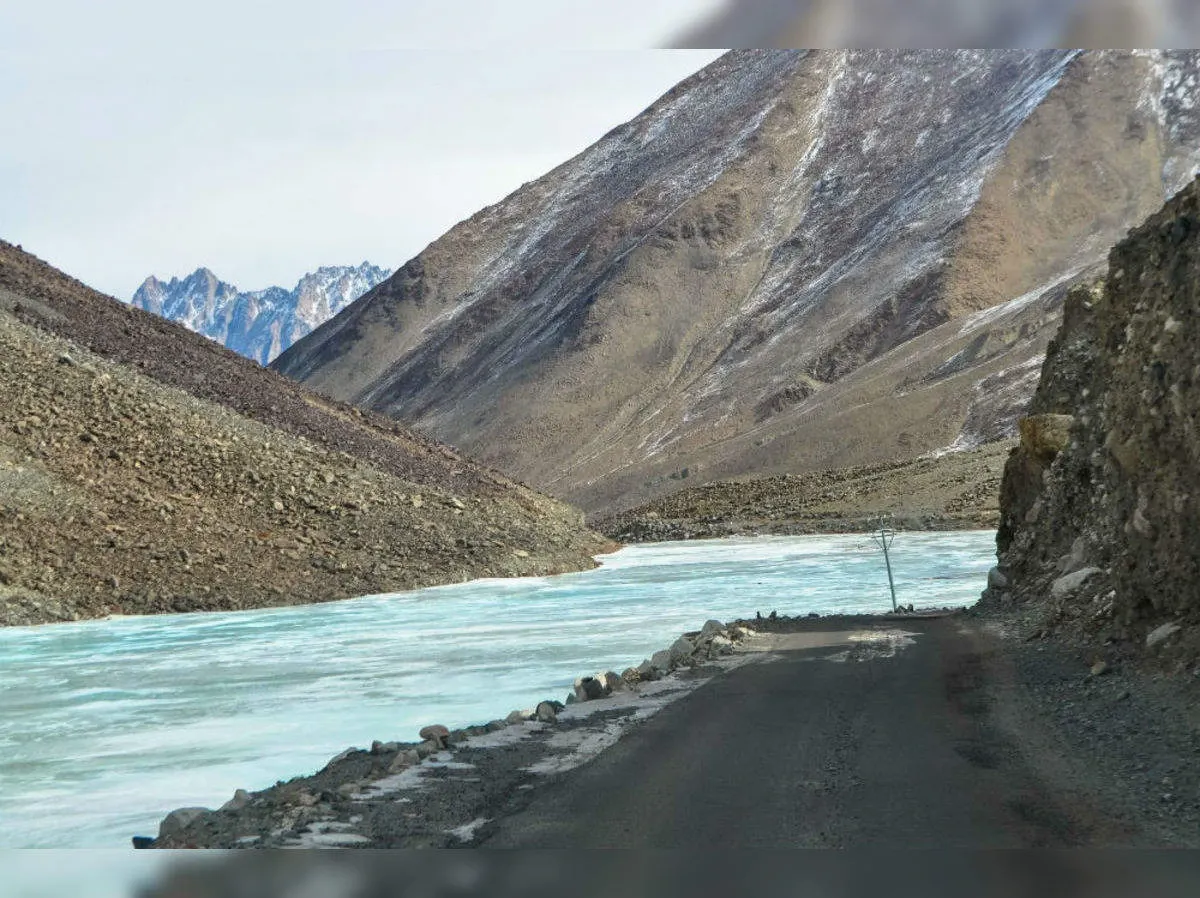
Visiting Leh Ladakh from mid-November to March signifies the winter season, a period marked by extreme cold temperatures and snow-covered landscapes. Here are more details on what to expect during this winter period:
Extreme Cold Weather:
- Subzero Temperatures: Winter in Ladakh is characterized by subzero temperatures, especially during the night. Daytime temperatures can also be quite cold, ranging from freezing to a few degrees above freezing.
- Frozen Landscape: The region transforms into a winter wonderland, with snow covering the mountains, valleys, and villages. The landscape takes on a serene and pristine appearance.
Limited Accessibility:
- Closure of High Mountain Passes: Most high mountain passes, including Khardung La and Chang La, close during this period due to heavy snowfall. This limits overland access to Leh Ladakh, as roads become impassable.
- Restricted Air Travel: Flights to and from Leh may be affected by winter weather conditions. It's essential to check flight schedules and be prepared for possible delays or cancellations.
Minimal Tourist Activity:
- Low Tourist Numbers: Winter sees a significant reduction in tourist activity, and many guesthouses, hotels, and restaurants close during this off-season. The region becomes quieter, with fewer visitors.
- Limited Services: Services and facilities become minimal, and some tourist-related activities and tours may be unavailable. It's crucial to plan ahead and confirm the availability of accommodations and essential services.
Winter Festivals:
- Losar Celebrations: The Ladakhi New Year, known as Losar, is celebrated during the winter months. It involves traditional rituals, prayers, and cultural events. Local communities come together to welcome the new year.
- Stok Guru Tsechu: The Stok Guru Tsechu festival is celebrated in the Stok Monastery during the winter. It includes mask dances, prayers, and cultural performances.
Chadar Trek:
- Chadar Trek Opportunity: Mid-January to February is the prime time for the Chadar Trek, a unique and challenging trek on the frozen Zanskar River. This trek is popular among adventure enthusiasts who seek the thrill of walking on a frozen river.
Limited Outdoor Activities:
- Restricted Trekking: Most trekking routes and trails are inaccessible due to heavy snow, making trekking activities limited during this period.
- Ice Skating and Hockey: In some frozen lakes and areas, locals engage in ice skating and ice hockey, providing a glimpse into the winter recreational activities of the region.
Traditional Winter Practices:
- Winter Farming Practices: Agriculture becomes almost non-existent during winter. Locals focus on traditional practices such as winter farming, where certain crops are cultivated in greenhouses to sustain the community.
- Animal Husbandry: Taking care of livestock becomes a priority, with animals sheltered indoors to protect them from the harsh winter conditions.
Starry Nights and Clear Skies:
- Astro-Tourism: Despite the cold, Ladakh's winter nights offer some of the clearest skies, making it an excellent destination for astro-tourism. Stargazing enthusiasts can witness a breathtaking display of stars and constellations.
- Aurora Borealis Possibility: In rare instances, the northern lights (Aurora Borealis) can be visible in Ladakh's winter skies, especially in remote and high-altitude areas with minimal light pollution.
Winter Wildlife:
- Snow Leopard Spotting: Winter is a unique time for wildlife enthusiasts, as the elusive snow leopard may descend to lower altitudes in search of food. Specialized wildlife tours offer the opportunity to spot these magnificent creatures.
- Birdwatching: Some bird species, adapted to cold climates, can be observed in Ladakh during the winter months.
Cultural Immersion:
- Winter Festivities: Experience the warmth of Ladakhi hospitality during winter festivals and cultural celebrations. Engage with the local community, participate in traditional activities, and enjoy the unique winter atmosphere.
Visiting Leh Ladakh from mid-November to March requires thorough preparation for extreme cold conditions, limited services, and potential travel disruptions. While outdoor activities are restricted, this period offers a rare opportunity to witness the region's winter beauty, engage in cultural celebrations, and experience the unique lifestyle of Ladakh during the colder months





